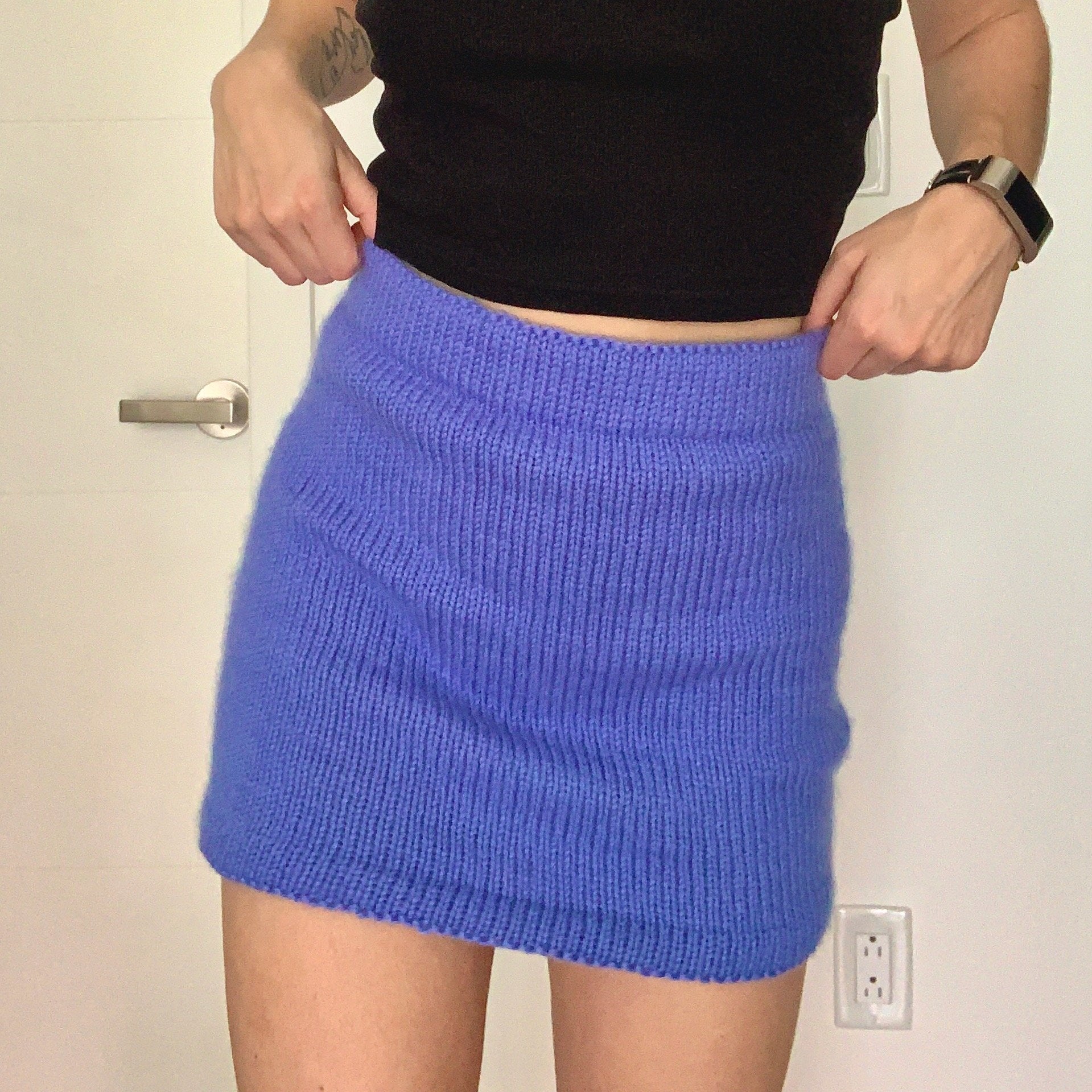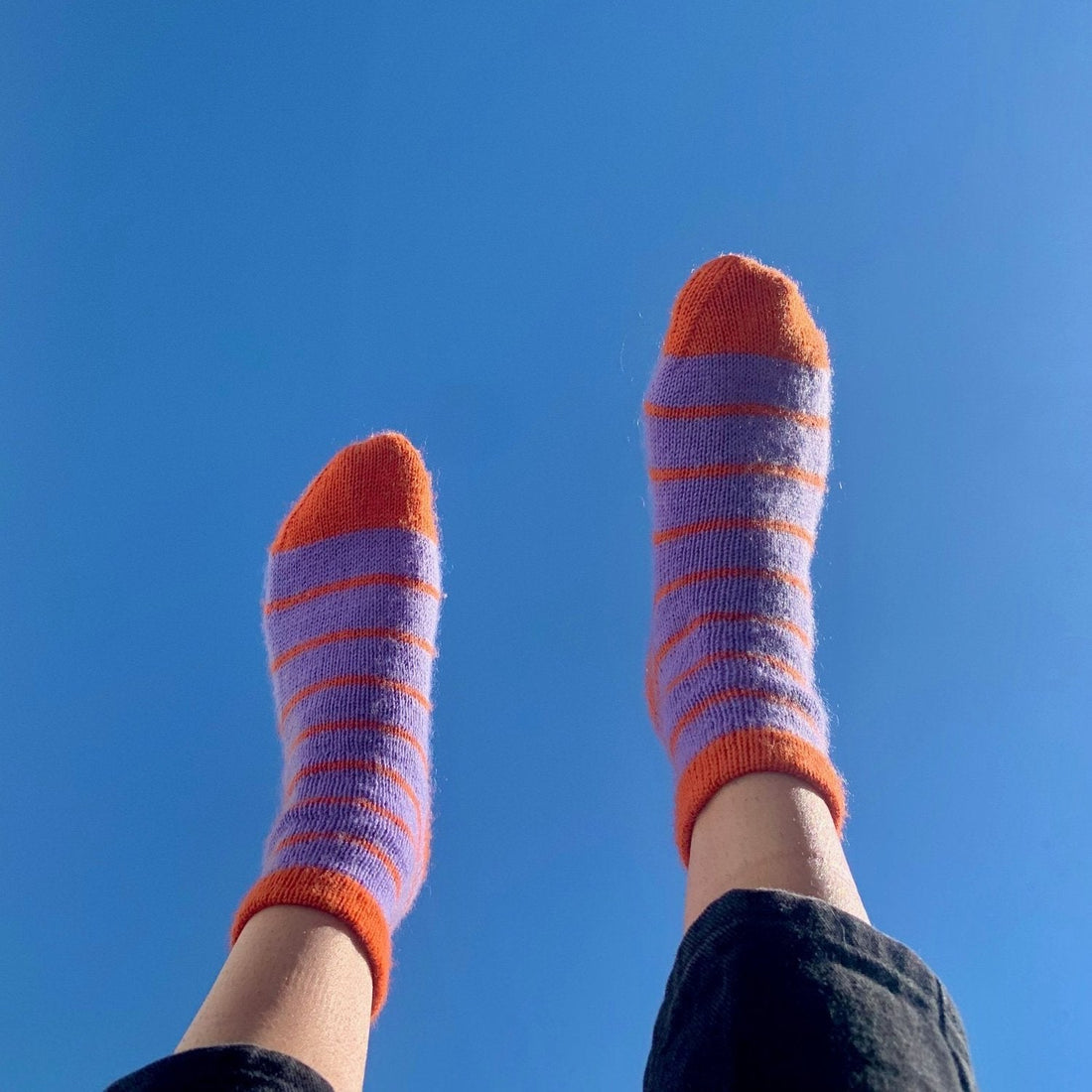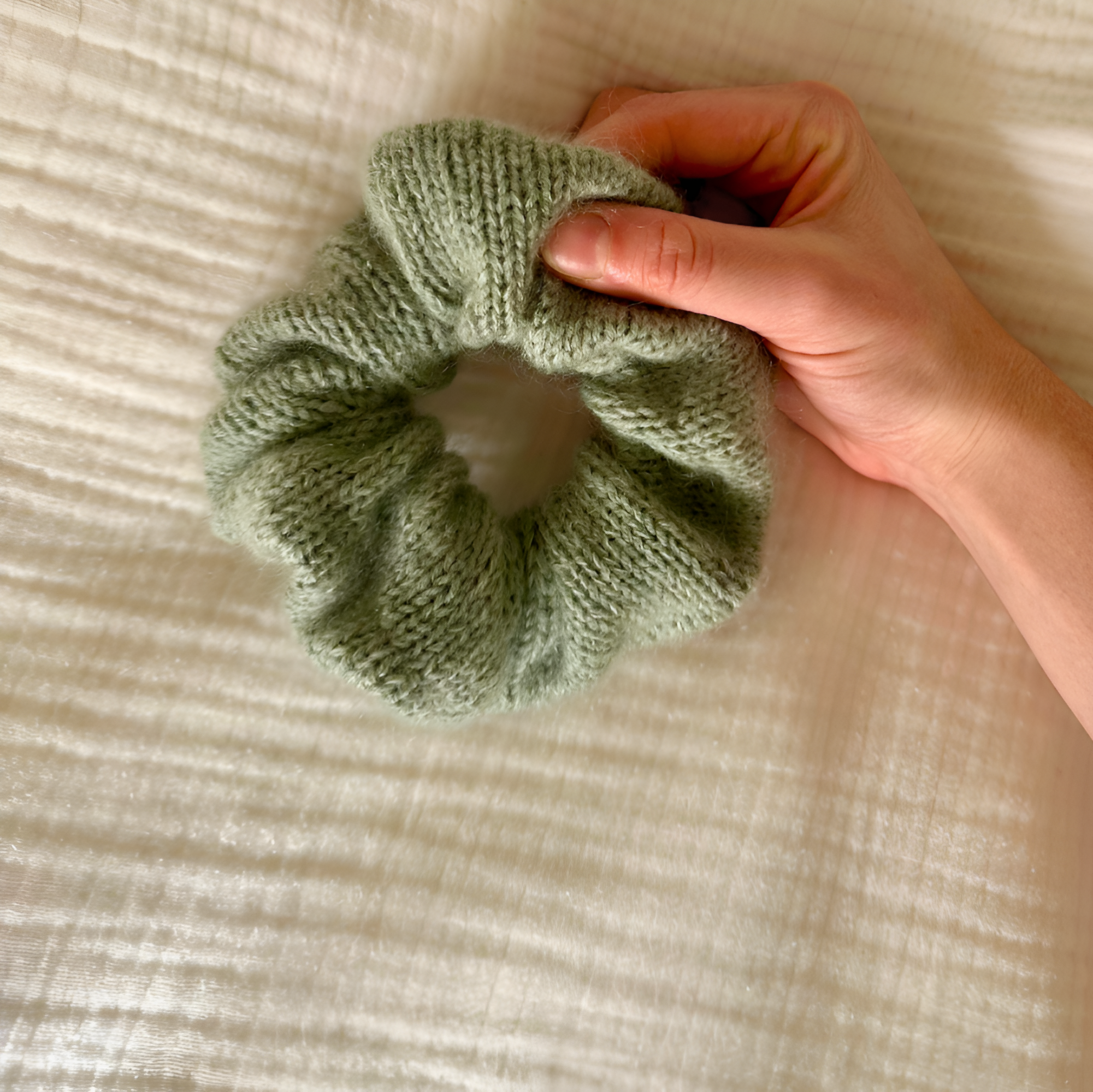Have you ever made a knitting pattern that… didn’t… quite fit you like it did the designer? Or have you ever seen a knitting pattern you like that… wasn’t made for your size? Both of these situations are disappointing, frustrating, and downright discouraging. But what if there was a solution? Let’s chat about the pros and cons of traditional knitting patterns versus those of custom, made-to-measure, formula-based knitting patterns!
What are “traditional knitting patterns”?
When I say “traditional knitting patterns,” I’m referring to patterns where there are a set number of sizes that have been graded, and all the math and work is done for you. When you purchase the pattern, you can open it up, see what size fits you best, and then start knitting based on the numbers that the designer has laid out for you in the pattern.
For example, you are dealing with what I call a "traditional knitting pattern" if you see a knitting pattern that has:
Letter sizes (XXS - 5XL, for example)
Set sizes based on measurements, such as bust, which I recently learned is the more inclusive and reliable way to indicate sizes for a knitting pattern. But that could be a whole other blog post.
Pros and Cons of Traditional Knitting Patterns
For some knitters, having the math and numbers already set is all they want or need. For traditional knitting patterns, that really is the big perk.
However, there are a few significant cons that come with traditional knitting patterns.
The first con I want to discuss is that having a pattern designed on one specific body may not look or fit right on ALL bodies. While making modifications can sometimes help (like adjusting the torso length), it doesn’t always.

And making modifications can sometimes be risky, especially for newer knitters, as the project might end up not as hoped, and then it sits in the closet being a source of guilt and shame for the knitter for years to come. (Just me? Cool.)
The second con is that some designers don’t grade their designs correctly or AT ALL for smaller or larger bodies. Not having patterns graded correctly results in a wonky project for sure, but not having them graded at all means that those people can’t even make the pattern. And that sucks.
What are “custom, made-to-measure, formula-based knitting patterns”?
Okay, I’m being extra with this label, but knitters refer to these kinds of patterns by calling them “custom knitting patterns,” “made-to-measure knitting patterns,” or “formula-based knitting patterns,” or (my personal favorite) “recipes”. These kinds of patterns don’t have set sizes.
For example, when you purchase a made-to-measure knitting pattern, you open it up and see empty boxes or fill-in-the-blank sections with math formulas. These sections are there because the designer wants you to input your unique body’s measurements and follow their instructions to create a garment that fits you perfectly.
Pros and Cons of Made-to-Measure Knitting Patterns
Where the big pro of traditional knitting patterns is having the math done for you, made-to-measure knitting patterns make you do the math. So fun, right?!
While doing all the math can sound scary and intimidating, designers will have set up the math and instructions in a (hopefully) simple and easy-to-understand way.

Following the designer’s instructions and plugging in your measurements will unlock the magical number of stitches, increases, decreases, rows, etc. that you need to do throughout the pattern to have it fit YOUR body just right.
Doing the math takes a little extra work that a traditional knitting pattern may call for, but the result is a garment that fits you and your quirky body perfectly.
Are you and math not bffs? Yeah, you’re not alone.
That’s why, in my newest made-to-measure knitting pattern, the Staple Sock, I’m including a Google Sheet with all of the formulas ready for you! All you have to do is plug in your measurements and bam! The math is done for you. How cool is that?!
(I also plan on doing an update on the Staple Skirt by adding a Google Sheet for that pattern as well!)
The Staple Skirt: A made-to-measure skirt knitting pattern
I’ve wanted to dive into knitting pattern design for a while now. I tried a few designs every now and then, but one big hold up was that I wanted to make sure the pattern fit and worked on everyone, so anyone could make it. When I couldn’t find a customizable, classic skirt knitting pattern that I liked, I decided to design my own.
The Staple Skirt is a made-to-measure skirt knitting pattern that is (you guessed it) a total closet staple! It is not only customizable to your measurements, but you can also customize the length, with knee-length being the longest it can go. You also have the option to add a slit!
While I love the benefits of made-to-measure knitting patterns, I was worried that knitters might be intimidated when it came to doing the math themselves. This nervousness is totally valid, especially if you have never worked with a made-to-measure knitting pattern before OR you have, but it was a stressful and confusing experience.
To help eliminate any fears, I want to give you a sneak peak into a small part of the measurements and math sections in the Staple Skirt pattern! I did my absolute best to make everything clear and simple (and also cute) so the pattern experience is enjoyable for any knitter who wants to make it:


While I’m rating this pattern as confident beginner/intermediate because of the math and added elements (like adding a waistband), I had several beginner knitters test it for me. I am so happy to say that they found it to actually be beginner-friendly!
Ultimately, I think made-to-measure knitting patterns should be the wave of the future. I’m so excited for the release of the Staple Skirt (which you can purchase now!), and I already have more designs in mind for a full “Staple Collection”. I can’t wait to share them all with you so we can create a knitwear capsule wardrobe (that fits just how we want it) together.
Interested in If you don’t want to miss the launch of future made-to-measure knitting patterns, be sure to sign up to the New Wave Knitting Circle newsletter!






